#doniol valcroze
Text

La Maison des bories 1970
1 note
·
View note
Photo
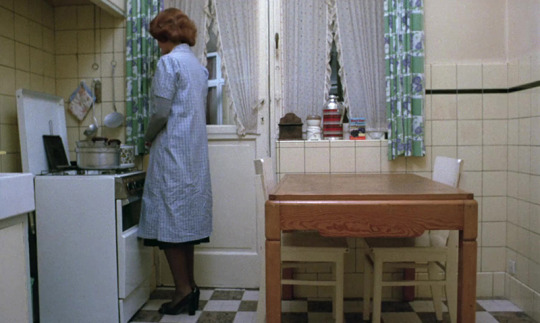
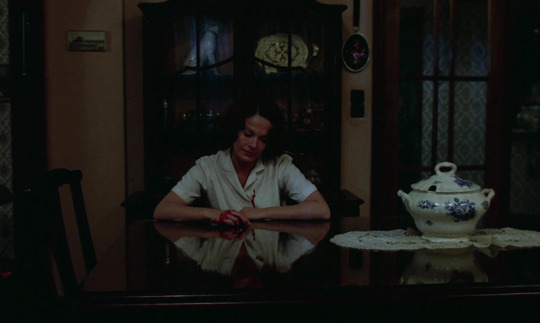
JEANNE DIELMAN, 23, QUAI DU COMMERCE, 1080 BRUXELLES (Chantal Akerman, 1975)
Sight and Sound: The Greatest Films of All Time
#jeanne dielman 23 quai du commerce 1080 bruxelles#jeanne dielman 23 commerce quay 1080 brussels#chantal akerman#delphine seyrig#jan decorte#henri storck#jacques doniol-valcroze#yves bical#film#cine
21 notes
·
View notes
Text
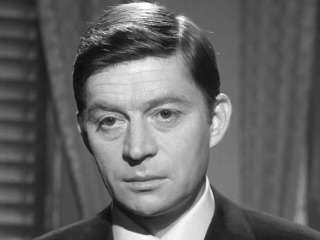
Les Surmenés (1958) de Jacques Doniol-Valcroze
Truffaut ayant participé au scénario, c'est une petite pièce qui manquait à mon échiquier. Bon, rien de vraiment formidable dans l'histoire de cette provinciale (championne du Limousin de dactylographie, 'tention!) qui monte à Paris, trouve son beau-frère admirable de vigueur (le type dort quatre heures par nuit, le reste du temps, il court) et son fiancé pantouflard. Du coup, elle recontacte Brialy, un quidam parisien rencontré dans le train (définitivement voué au rôle de dragueur de base) pour la sortir un peu... Mais la donzelle ne tarde point de se faire taper sur les doigts dans son taff et ses amours... Elle finira par rentrer dans le rang et à retrouver son fiancé (on revient toujours à ses croquettes Friskies, little private joke) sous le joug de phrases telles que "Le coeur a ses raisons que la raison approuve" ou encore (lorsque son beau-frère montre des signes de faiblesse) "ce fut la mort du mythe de l'homme invulnérable pouvant tout se permettre sans se soucier des rythmes harrassants de la vie moderne". C'est presque consternant vu la facilité qu'elle a à se soumettre... Bon faut se faire la main, on va dire.
shangols.canalblog.com
3 notes
·
View notes
Text
LES ARTISANS DE LA NOUVELLE VAGUE
LES ARTISANS DE LA NOUVELLE VAGUE
Après des années d’effort, demeurés à peu près vains depuis 1945, de jeunes réalisateurs français réussirent enfin à se faire remarquer en faisant irruption dans le monde cinématographique avec une énergie sans précédent. L’apparition soudaine en 1959 de la nouvelle vague mit le monde cinématographique en émoi. Ce fut une extraordinaire explosion d’activité créatrice : en dix-huit mois, une…

View On WordPress
#agnes varda#alexandre astruc#andré bazin#éric rohmer#chris marker#claude chabrol#eric rohmer#françois reichenbach#françois truffaut#jacques doniol valcroze#jacques rivette#jacques rozier#jean luc godard#jean rouch#louis malle#marcel camus#pierre kast
3 notes
·
View notes
Quote
From François Truffaut
Paris, 25 August 1959
Dear Sir,
First, allow me to express my profound admiration for Nazarín, a film of such magnificent simplicity, logic, intelligence and beauty.
Unfortunately, I also see it as my duty to pester you: in October we will publish issue no.100 of Cahiers du cinéma. This is an important occasion for us and we would be sorry if your name were not to appear on an index that will include many of Cahiers’ film-maker friends: Renoir, Becker, Bresson, McLaren, Cocteau, Tati, etc. Doniol-Valcroze, who has just made his first feature, will write a historical review of Cahiers; and we will publish the illustrated script of the documentary Bazin wanted to make about Roman churches.
Your contribution could be a message, a drawing, an imaginary interview, a letter, a polemic, anything; the main thing is that we should not celebrate this anniversary without you.
We need to finalize submissions on 15 September, so time is short…
Forgive me for interrupting your work (or rest) and be assured of my loyalty and devotion,
François Truffaut
Cahiers du cinema
146 Champs-Élysées
Jo Evans & Breixo Viejo, Luis Buñuel: A Life in Letters
#jo evans#breixo viejo#luis bunuel: a life in letters#luis bunuel#francois truffaut#jacques doniol-valcroze#andre bazin
0 notes
Text
Notable Males From The West Coast Transient (Bigg’s) Killer Whale Population

There are so many interesting whales in the West Coast transient population, and many of them have particularly unique stories and backgrounds. Here is a selection of notable males from this population:
First up, Charlie Chin! He is no longer alive, but remains one of the most physically unique males, and was briefly held in captivity before being released.

T068A “Ken” is arguably the most infamous—he and his mother committed the only documented act (so far) of infanticide in killer whales.

T011A “Rainy” is the largest measured whale in this population, and at over 27 feet in length, is also one of the largest recorded killer whales overall. Only a few whales have been measured at greater lengths.

T087 “Harbeson” is the oldest male in the population. At 60 years old, he has far outlived the average life expectancy of a male killer whale, which is around 30 years.

Finally, we have T063 “Chainsaw.” He is instantly recognizable and most whale watchers on the West Coast have this male on their “must see” list!

The stories of these whales are only able to be told thanks to the decades of work done by the biologists at Fisheries and Oceans Canada, Bay Cetology, The Center for Whale Research, the North Gulf Oceanic Society, and countless others.
References:
Pacific Whale Watch Association
Podt, A. (2017). A Special Family, the T2s. Orcazine.
Kotik, C. (2020). Aerial photogrammetry to estimate size, growth, and body condition of mammal-eating Bigg’s killer whales. UC San Diego.
Towers, J.R., Hallé, M.J., Symonds, H.K. et al. (2018) Infanticide in a mammal-eating killer whale population. Sci Rep 12, 6418
Towers, J.R., Sutton, G.J., Shaw, T.J.H., Malleson, M., Matkin, D., Gisborne, B., Forde, J., Ellifrit, D., Ellis, G.M., Ford, J.K.B., and Doniol-Valcroze, T. 2019. Photo-identification Catalogue, Population Status, and Distribution of Bigg’s Killer Whales known from Coastal Waters of British Columbia, Canada. Can. Tech. Rep. Fish. Aquat. Sci. 3311: vi + 299 p
352 notes
·
View notes
Text
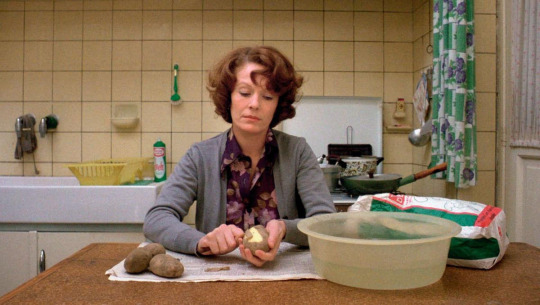
Delphine Seyrig in Jeanne Dielman, 23 Commerce Quay, 1080 Brussels (Chantal Akerman, 1975)
Cast: Delphine Seyrig, Jan Decorte, Henri Storck, Jacques Doniol-Valcroze, Yves Bical. Screenplay: Chantal Akerman. Cinematography: Babette Mangolte. Art direction: Philippe Graff. Film editing: Patricia Canino.
With Jeanne Dielman (to shorten its unwieldy title) Chantal Akerman tests the medium to see whether a story can be told without melodrama, without excess camera movement, without a music track, without all the usual cinematic techniques. She also tests the audience, to see if they will sit through a 201-minute film in which minutes go by without anything happening other than a woman taking a bath, washing the bathtub, preparing dinner, eating it with her son, washing dishes, and so on -- all in long takes with no apparent forward narrative drive. The answer is yes, a story can be told that way. As for the audience, I wouldn't recommend it to anyone who doesn't have a high tolerance for cinematic riddles, or who can't sit raptly looking at a painting in a museum for minutes on end. Most of the scenes are filmed straight on, as if looking at them through a frame. In short, Akerman treats a kinetic medium, motion pictures, as if it were a static medium like painting. Is it the greatest film of all time, as has been claimed? I think it's at least a great film, but I don't have any urgent desire to see it again soon. What it did to me was make me aware of watching, of patiently waiting to see what image would be presented to me next, what piece of the puzzle that is Jeanne Dielman (Delphine Seyrig) would fall into place. It takes place over the course of three days, on the first of which Jeanne presents herself as a supremely capable and precise person, going through the motions of her daily existence (which include receiving a man into her bedroom, because she makes a living for herself and her son by discreet prostitution) with calm efficiency. On the first two days, we don't follow her into the bedroom with her client, but the camera lingers in the hall, looking at the bedroom door, until the light fades enough to indicate a passage of time, whereupon she and the man emerge from the bedroom and go to her apartment door, where he pays her and indicates that he will see her again in a week. She then goes to her dining room and puts the money in a blue-and-white tureen, whose lid makes a satisfying clink when she covers it. (In the absence of a music track, ambient sounds take on a greater role.) Later, her son, Sylvain (Jan Decorte), comes home from school and they have dinner, listen to the radio, go out for a walk, and come back home to rearrange the living room furniture so he can unfold the sofa for his bed. They go to sleep. But because many of these incidents are presented in real time, we are allowed to examine them in detail, to notice the furnishings of the apartment and the lack of affect of both mother and son, who have settled into a routine. We also notice the way a blue light, apparently from a sign outside their apartment, bounces off the surfaces of the furniture: It flashes and flickers in a way that suggests a rhythmic repetition but never quite resolves itself into a pattern. In that regard it's unlike Jeanne and Sylvain, who clearly have a pattern to their lives. And that's why it's a shock on the second day -- which begins about an hour into the film -- when Jeanne fails to do up a button on her housedress, something that Sylvain brings to her notice. Or later, when other elements of the pattern of her life don't fall in place: She burns the potatoes she is preparing for dinner; she forgets to switch off a light when she moves from room to room; she fails to put the cover on the tureen after putting the money from the second day's client into it. In any other context than the one established by the first day depicted in the film, these details would be insignificant. But Akerman makes them significant, even troubling, by having made us aware of the cold precision of Jeanne's routine. That this eventually builds to a remarkable climax (I use the word advisedly but not facetiously) is made possible by the mastery with which Akerman has set up her film. I kept wondering what Alfred Hitchcock, the master of voyeurism in cinema, might have made of Jeanne Dielman, a film that makes voyeurs of us all.
2 notes
·
View notes
Photo

art by Diane Doniol-Valcroze
2 notes
·
View notes
Text
Some Mysteries Don't Get Solved - Cont'd.
The mystery that I refer to in the title of this piece at Tumblr is a discovery for me; it is unique, unexpected. It is a large part of my experience of a movie that I watched recently, an unusual foreign language movie that did not get theatrical distribution, here, in the U.S. The name of the movie is DENUNCIATION (org'l title: LA DENONCIATION - 1961). DENUNCIATION played in theatres throughout France, starting on July 18, 1962.
This is a contemporary drama, with psychological and thriller elements, that might prove to be a problem for some movie lovers. That's because DENUNCIATION is an example of a movie that is difficult to understand.
As I say, some mysteries do not get solved.
The mystery has to do with the intention, the feeling of purpose, the thinking that went into creating the script of the movie. The script was written by DENUNCIATION's director, Jacques Doniol-Valcroze. Did the writer-director explain his intention, his purpose, his thinking when the movie debuted? Is there an in-depth interview somewhere -- an interview in a French newspaper or magazine, on a radio station or TV channel? It's definitely worth a search. However, French writers do enjoy spinning their words, making something that takes place in a person's life more complicated than when it was first encountered.
Consider that the movie begins with a quotation attributed to a French writer: "We live in the oblivion of our metamorphoses."
The main character of DENUNCIATION is a movie producer named Michel Jussieu (Maurice Ronet), in his 30's, who goes to a nightclub in Paris the day following a trip there with his wife, Elsa (Francoise Brion), and a business partner, the previous evening. He has to wait outside for Le Play-Boy to open up and, when he enters, he stumbles upon a man's body on the floor. A door in the rear of the club's upper floor opens and a young woman, joined by a young man, enters. They heard some noise; was it Jussieu they heard or something else? Jussieu senses that he needs to exit and tries to, but a third person, a man, blocks his path. A fight quickly ensues and Jussieu is hit from behind with a chair. He collapses to the floor, unconscious.
The man that Jussieu almost tripped over was a well-known political writer and activist and his death is front page news when Jussieu wakes up the following morning.
As the plot of DENUNCIATION plays out, everything that happens becomes more and more complicated, characters are introduced and their participation and involvement become stories that are interesting in themselves. Michel remains the main character, the central character. He is haunted by what he went through as a Resistance fighter during World War II.
To add to the complexity, there's a narrator; there's Michel's current movie project, there's Jussieu's family, plus the day-to-day details of the Play-Boy nightclub.
If any of this sounds interesting, DENUNCIATION is available on DVD with English subtitles.
-- Drew Simels
0 notes
Text
...
"Our little lives are filled with great traps,
you fall in,
and then you learn by trying to get out.
you will learn."
"I'm not obsessed by the demon of knowledge."
La Denonciation
a film by Jacques Doniol-Valcroze
0 notes
Photo




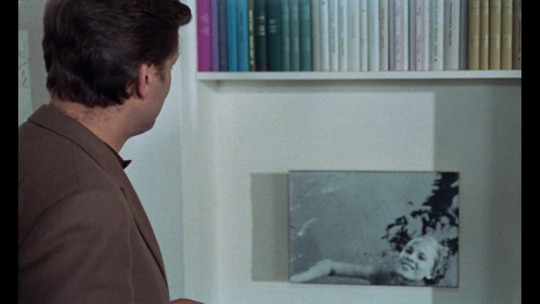




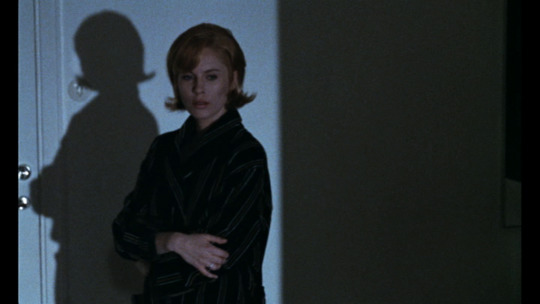
Le viol 1967
5 notes
·
View notes
Photo

Richard Brooker as Jason Voorhees shooting pool on the set of Friday the 13th Part 3. - Diane Doniol-Valcroze (@ddoniolvalcroze).
#Steve Miner#Friday the 13th Part III#Friday the 13th#Richard Brooker#Jason Voorhees#Diane Doniol-Valcroze#ddoniolvalcroze#Twitter#Behind the Scenes
12 notes
·
View notes
Text
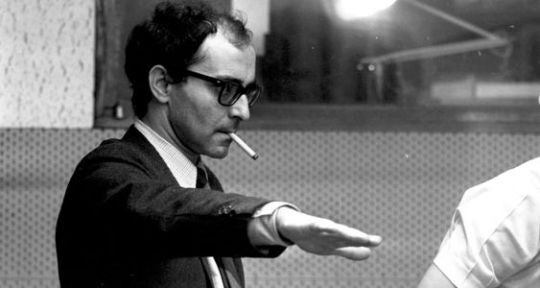
Jean-Luc Godard: Making Cinema on the Page
Jean-Luc Godard commence très jeune à écrire pour des magazines de cinéma. Il a vingt ans lorsqu'il publie ses premiers articles dans La Gazette du cinéma , la lettre d'information du Ciné-Club du Quartier Latin à Paris, dirigée par Eric Rohmer. Cette Gazette eut une durée de vie éphémère – cinq numéros au total – et Godard y contribua six articles de juin à octobre 1950, sous le pseudonyme de Hans Lucas (Jean-Luc traduit en allemand). Son premier article pour les Cahiers du cinéma date de janvier 1952 (avec un article sur No Sad Songs for Mepar Rudolph Maté). C'est le début d'une longue collaboration avec la revue fondée par Joseph-Marie Lo Duca, Jacques Doniol-Valcroze et André Bazin en 1951. Critique tout au long des années 1950, Godard apparaîtra également dans les Cahiers comme enquêteur (comme en témoignent, entre autres, d'autres, sa grande interview avec Antonioni, lors de la sortie de Red Desert en 1964). Bien sûr, il est ensuite, à son tour, lui-même interviewé par la revue, où il modifie souvent les règles de l'interview conventionnelle, comme en témoignent par exemple ses « non-réponses » aux questions des Cahiers du no. 402 (décembre 1987), à la sortie de Soigne ta droite . Il s'est également vu confier l'organisation de numéros spéciaux – comme le numéro no. 300 deCahiers du cinéma , paru en mai 1979
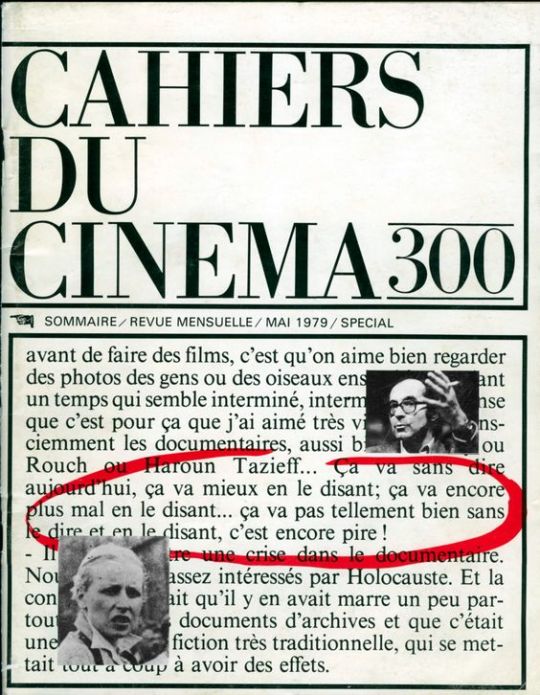
Si les légendes écrites sont absentes de ce numéro spécial des Cahiers, c'est aussi parce que l'image semble parfois être la première motrice, c'est-à-dire que son choix détermine le geste épistolaire, ou que le contenu de certaines lettres en est la conséquence logique. Ainsi, dans une lettre à la cinéaste féministe Carole Roussopoulos, Godard s'interroge sur la pertinence du parcours éditorial que doit suivre une revue : « Un magazine de cinéma pourrait servir plus commodément que les films cette fonction : montrer comment le temps est parcouru, comment il est découvert, devant qui et pourquoi. Cette affirmation intervient juste après que Godard ait stigmatisé une "tendance" au cinéma où la nécessité de faire des films ne se manifeste pas forcément, où "ceux qui font des films n'ont pas vraiment besoin de ce qu'ils capturent pour eux-mêmes - disons, pour améliorer leur vie. En fait, ils ont tendance à se cacher derrière l'image de l'autre, et l'image sert alors à effacer.
sensesofcinema.com
14 notes
·
View notes
Photo

189 notes
·
View notes
Text
FRANÇOIS TRUFFAUT
Deux passions ont possédé François Truffaut : le cinéma et la vie. Deux passions qui ont nourri une œuvre tout en allégresse, mais aussi en gravité. Réalisateur très personnel, Truffaut a réussi le prodige rare de rassembler les suffrages des esthètes les plus exigeants et ceux du grand public. La dette du cinéma français à son égard est immense.
Mes deux cents premiers films, écrit François…

View On WordPress
#alfred hitchcock#andré bazin#fanny ardant#françois truffaut#georges delerue#jacques doniol valcroze#jean cocteau#jean luc godard#jean pierre léaud#jean renoir#nouvelle vague
4 notes
·
View notes
Photo
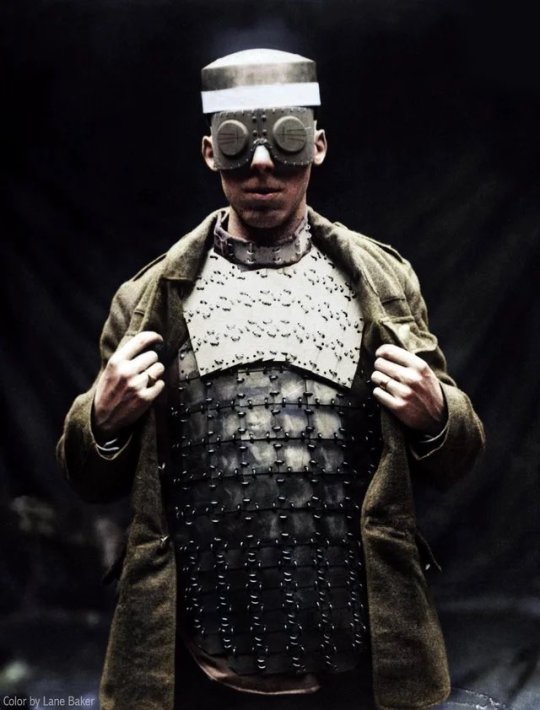
Experimental Body Armor from World War I, colorized by Lane Baker.
2 notes
·
View notes